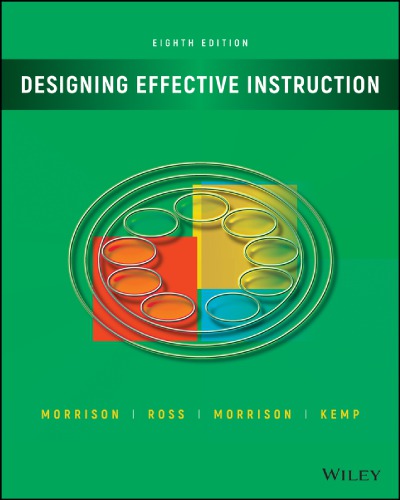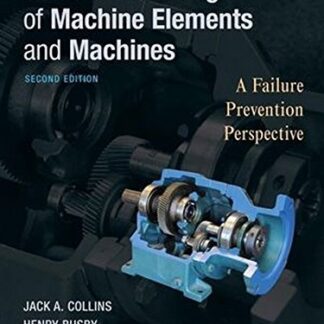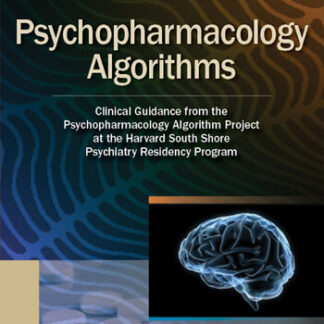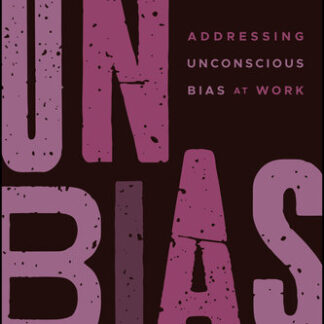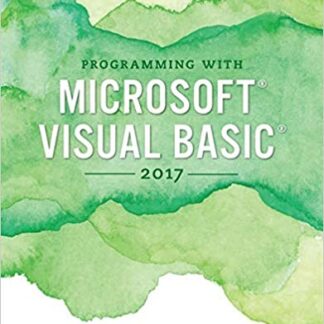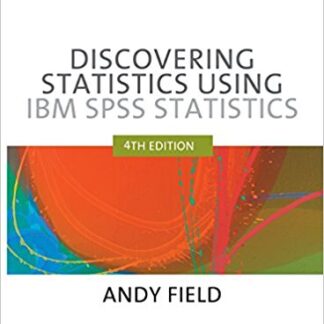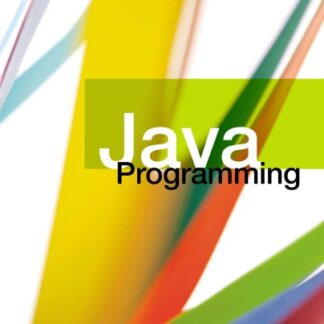Description
Designing Effective Instruction 8th Edition by Gary R. Morrison, ISBN-13: 978-1119465935
[PDF eBook eTextbook]
- Publisher: Wiley; 8th edition (March 19, 2019)
- Language: English
- 512 pages
- ISBN-10: 1119465931
- ISBN-13: 978-1119465935
A guide to the information and practical skills for successful instructional design, revised and updated
The updated eighth edition of Designing Effective Instruction offers educators an essential guide for designing effective and efficient instruction that is exciting and interesting. The flexible model presented is based on research from many different disciplines. The authors–noted experts on the topic–draw on recent research that incorporates both behavioral and cognitive approaches into the model.
The eighth edition highlights the fundamentals of instructional design that can help students develop a solid foundation in the design process. These basic skills can be adapted to a wide variety of settings, such as multimedia, classroom, business, health care, higher education, and distance-education instruction. This new edition has been revised to include information on the most recent research and trends. The book also contains a new section on the topic of lean instructional design. This new section discusses strategies to reduce time and resources for each step of the process. This important guide:
– Offers a review of the basic skills needed to create effective instruction
– Includes various features to stimulate thinking and provides additional explanations
– Provides a real-world scenario in every chapter
– Presents exercises to test skills and knowledge
– Contains a quality management section to help conduct a quick quality check of the design project
Written for instructional designers in business, military, medical, and government settings as well as to those in higher education and P-12 classrooms, Designing Effective Instruction is the proven resource for designing quality instruction that can motivate participants.
Table of Contents:
Preface xi
Acknowledgments xiv
About the Authors xv
Chapter One Introduction to the Instructional Design Process 2
Getting Started 2
Why Instructional Design? 4
What Is Instructional Design? 8
Overview of Our Design Model 16
Who’s Who in the Instructional Design Process 20
Answering the Critics 21
Questions . . . Questions . . . Questions 23
Summary 23
The ID Process 24
Application 25
Answers 25
References 25
Chapter Two Identifying the Need for Instruction 28
Getting Started 28
Is Instruction the Answer? 30
Needs Assessment 31
Goal Analysis 41
Performance Assessment 44
Summary 45
The ID Process 46
Application 47
Answers 48
Quality Management 49
Instructional Design: Decisions and Choices 49
References 50
Chapter Three Learner and Contextual Analysis 52
Getting Started 52
Types of Learner Characteristics 54
Contextual Analysis 63
Summary 67
The ID Process 67
Application 68
Answers 69
Quality Management 69
Instructional Design: Decisions and Choices 69
Potential Audience Misconceptions 71
Orienting Context 71
References 71
Chapter Four Task Analysis 74
Getting Started 74
Task Analysis 76
Topic Analysis 79
Procedural Analysis 82
The Critical Incident Method 90
Conducting a Task Analysis 92
Summary 95
The ID Process 95
Application 96
Answer 96
Quality Management 98
Instructional Design: Decisions and Choices 99
References 101
Chapter Five Instructional Objectives 104
Getting Started 104
Function of Objectives 104
Three Objective Domains 106
Developing Instructional Objectives 110
Writing Objectives in the Cognitive Domain 111
Writing Objectives for the Psychomotor Domain 117
Writing Objectives for the Affective Domain 117
Classifying Objectives 119
Pros and Cons of Writing Objectives 121
Summary 122
The ID Process 122
Application 123
Answers 124
Quality Management 124
Instructional Design: Decisions and Choices 125
References 127
Chapter Six Designing the Instruction: Sequencing 128
Getting Started 128
The Posner and Strike Sequencing Schemes 130
Elaboration Theory Sequencing 136
Content Expertise Sequencing 136
Task Expertise Sequencing 136
From Objectives to Sequencing 137
Summary 137
The ID Process 137
Application 138
Answers 138
Quality Management 138
Instructional Design: Decisions and Choices 139
References 140
Chapter Seven Designing the Instruction: Strategies 142
Getting Started 142
Why Instructional Strategies? 144
Prescriptions for Instructional Strategies 146
Summary 159
The ID Process 160
Applications 161
Answers 161
Quality Management 162
Instructional Design: Decisions and Choices 162
References 165
Chapter Eight Designing the Instructional Message 170
Getting Started 170
Preinstructional Strategies 172
Message Design for Text 176
Pictures and Graphics in Instruction 183
Effectiveness 183
Graphical Signals 184
Summary 191
The ID Process 191
Lean Instructional Design 191
Applications 192
Answers 192
Quality Management 193
Instructional Design: Decisions and Choices 193
References 195
Chapter Nine Developing Instructional Materials 200
Getting Started 200
Starting the Development of the Instruction 200
Heuristics for Developing Instruction 203
Putting Pen to Paper or Fingers to Keyboard 207
Group Presentations 217
Self-Paced Learning 222
Changing Roles 225
Small-Group Formats 226
Summary 229
The ID Process 230
Application 230
Answer 231
Quality Management 231
Instructional Design: Decisions and Choices 231
References 232
Chapter Ten Design Considerations for Technology-Based Instruction 238
Getting Started 238
Individualized Computer- and Web-Based Instruction 240
Design Considerations for Individualized Computer and Web-Based Instruction 243
Design Considerations for Group-Based Distance Instruction 255
Summary 258
The ID Process 258
Application 259
Answer 259
Quality Management 259
Instructional Design: Decisions and Choices 260
References 261
Chapter Eleven The Many Faces of Evaluation 268
Getting Started 268
Purposes of Evaluation 270
Relationship among Formative, Summative, and Confirmative Evaluations 274
Relationship between Evaluation and Instructional Objectives 276
Suggested Measures for Alternative Outcomes 277
Validity and Reliability of Tests 277
Standards of Achievement 282
Student Self-Evaluation 286
Summary 288
The ID Process 289
Application 291
Answer 291
Instructional Design: Decisions and Choices 291
References 293
Chapter Twelve Developing Evaluation Instruments 296
Getting Started 296
Testing Knowledge 298
Testing Skills and Behavior 311
Attitudes 323
Summary 329
The ID Process 329
Applications 330
Answers 330
Instructional Design: Decisions and Choices 331
References 333
Chapter Thirteen Using Evaluation to Enhance Programs: Conducting Formative and Summative Evaluations 334
Getting Started 334
A Basic Model for Formative Evaluation 336
Types of Formative Evaluation 341
Stages of Formative Evaluation 344
Summative Evaluation: Determining Program Outcomes 345
Program Effectiveness 347
Program Efficiency 350
Program Costs 351
Confirmative Evaluation: Determining Outcomes Over Time 355
Reporting Results of Summative and Confirmative Evaluations 359
Summary 359
The ID Process 360
Application 362
Answer 362
Instructional Design: Decisions and Choices 362
References 364
Chapter Fourteen Learning Theory and Instructional Theory 366
Getting Started 366
Introduction 368
Learning Theory 369
Summary 382
The ID Process 383
Application 385
Answer 386
Instructional Design: Decisions and Choices 386
References 387
Chapter Fifteen Planning for Instructional Implementation 390
Getting Started 390
Planned Change 390
The CLER Model 395
Planning the Implementation with the CLER Model 399
Tichy’s TPC (Technical, Political, Cultural) Framework 401
Developmental Stages and Information Decision Process Models 402
Implementation Decisions 403
Instructors 405
Role of Supervisors 407
Summary 408
The ID Process 408
Application 409
Answers 409
Instructional Design: Decisions and Choices 410
References 410
Chapter Sixteen Instructional Design Project Management 412
Getting Started 412
Project Management 414
Project Agreement and Proposal Preparation 422
Instructional Design Shortcuts 427
Flexibility of the Instructional Design Process 427
Instructional Design in Organizations 427
Working with the Subject-Matter Expert and Consultants 429
Legal Considerations in ID Project Management 431
Summary 434
The ID Process 434
Application 435
Answers 435
Instructional Design: Decisions and Choices 435
References 436
Appendix A Sample Instructional Design Documentation 439
Appendix B A Sample Instructional Unit 449
Glossary 459
Index 463
What makes us different?
• Instant Download
• Always Competitive Pricing
• 100% Privacy
• FREE Sample Available
• 24-7 LIVE Customer Support

